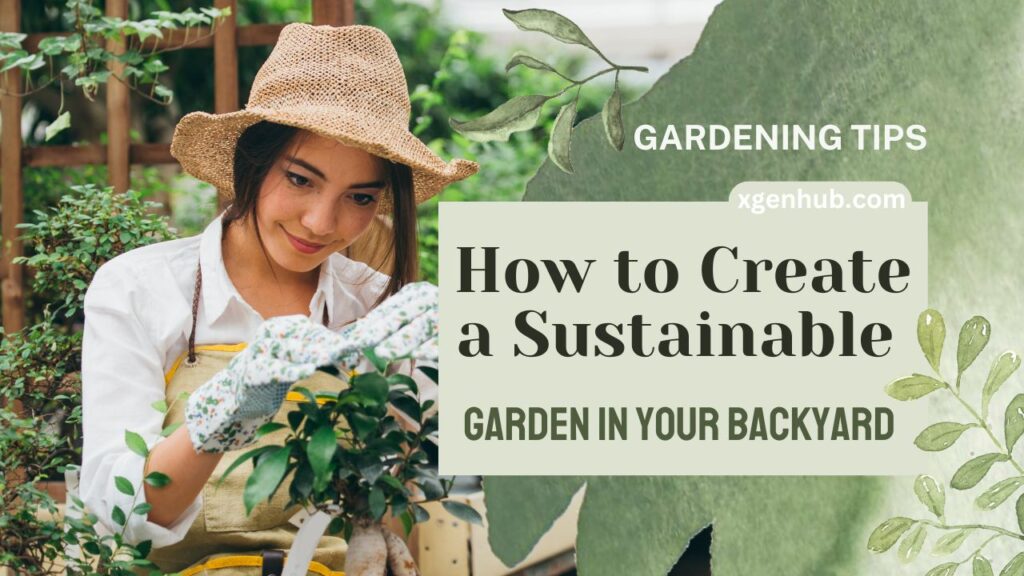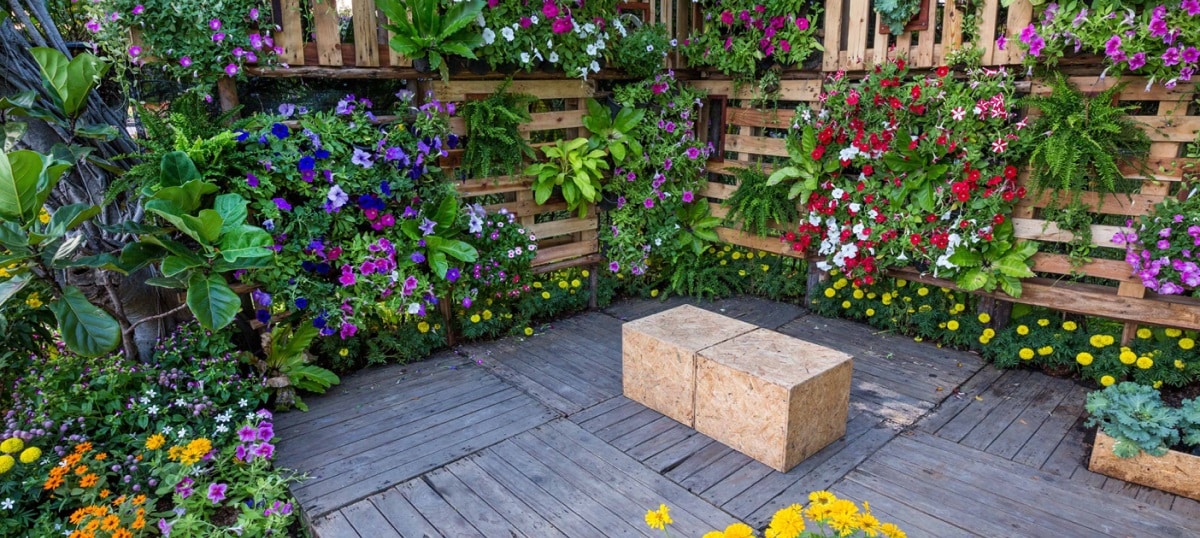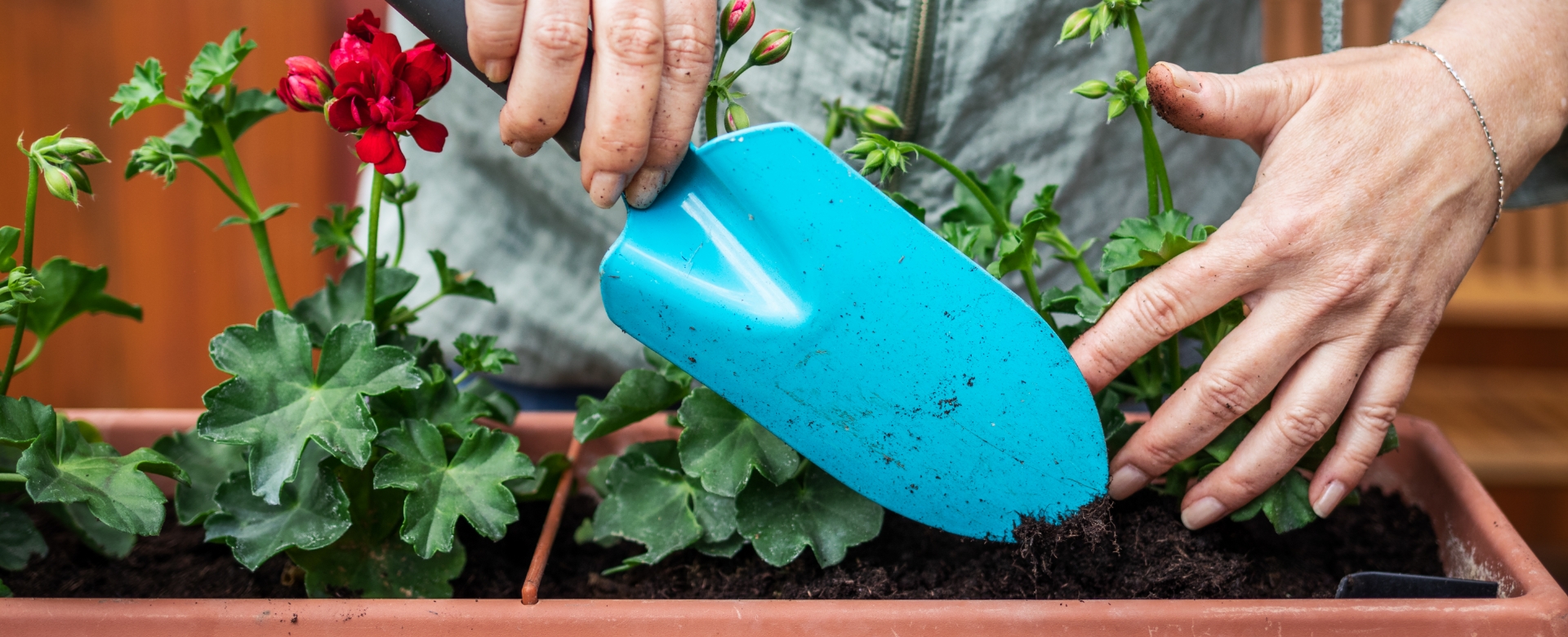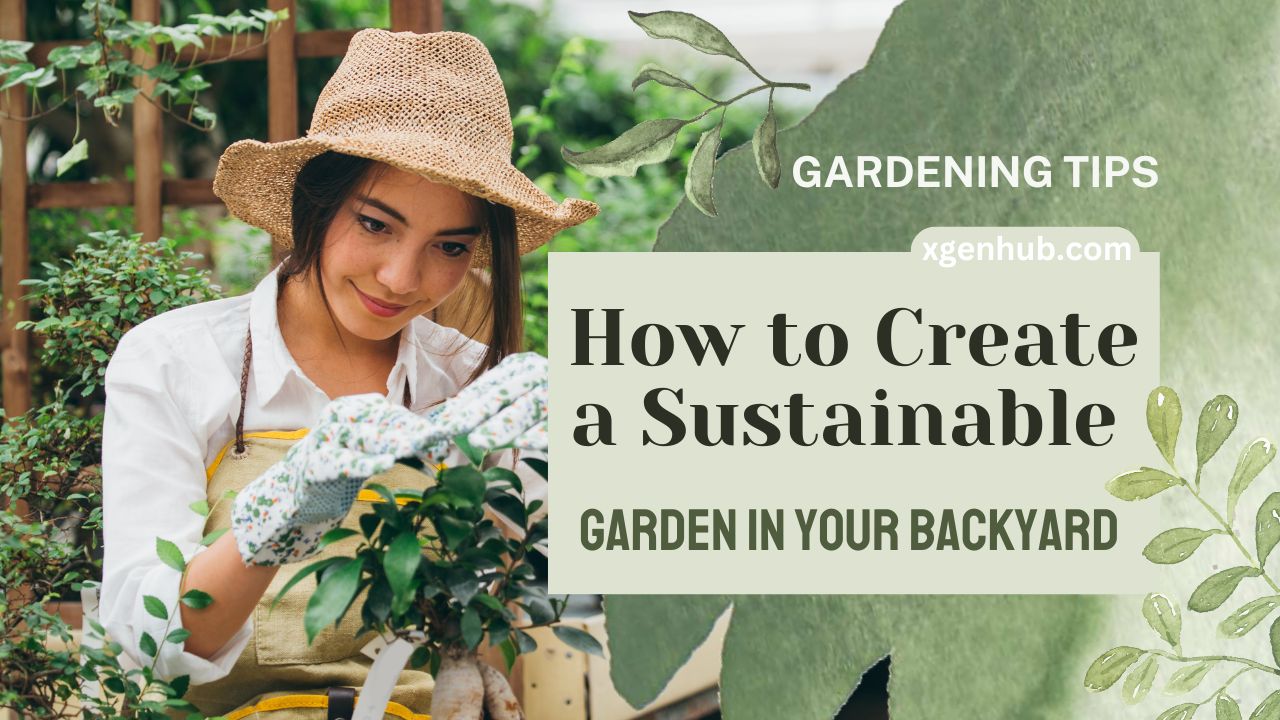Creating a sustainable garden in your backyard is not just a trend; it’s a lifestyle choice that benefits both the environment and your well-being. Whether you’re passionate about reducing your carbon footprint, conserving water, or growing organic produce, a sustainable garden helps you achieve all these goals. In this guide, we’ll walk you through every aspect of creating a sustainable garden, ensuring it flourishes season after season. From planning, soil management, water conservation techniques, plant selection, and eco-friendly garden practices, this detailed guide will empower you to develop a green oasis right at home.
Unlock Your Online Success! Watch Our Exclusive Video for FREE and Start Earning Today!

Why Create a Sustainable Garden?
Before diving into the specifics, let’s understand why a sustainable garden is essential. Traditional gardening practices often involve high water consumption, synthetic chemicals, and non-native plants that harm local ecosystems. In contrast, a sustainable garden reduces environmental impact and enhances biodiversity while promoting healthier lifestyles.
Unlock Your Online Success! Watch Our Exclusive Video for FREE and Start Earning Today!

Here’s why creating a sustainable garden should be your next project:
- Reduce your carbon footprint: Sustainable gardening minimizes the need for transportation of goods by growing your own produce.
- Conserve natural resources: By using water wisely and choosing native plants, you can significantly reduce water consumption.
- Support biodiversity: Sustainable gardening encourages the growth of plants that attract beneficial insects, birds, and other wildlife, fostering a healthy ecosystem.
- Improve soil health: By avoiding chemical fertilizers and pesticides, sustainable practices enhance soil quality and fertility over time.
- Grow organic food: Enjoy fresh, organic vegetables, herbs, and fruits right from your backyard.
Step 1: Planning Your Sustainable Garden
Proper planning is the foundation of a successful sustainable garden. By taking the time to plan, you’ll be able to maximize efficiency, minimize waste, and create a garden that works in harmony with nature.
Unlock Your Online Success! Watch Our Exclusive Video for FREE and Start Earning Today!

1.1 Assess Your Space
Start by evaluating the available space in your backyard. Measure the area, observe the amount of sunlight it receives, and identify areas of shade and exposure to wind. Understanding these factors will help you decide what to plant and where.
- Sunlight: Most vegetables, herbs, and fruit-bearing plants need at least 6-8 hours of sunlight daily. Areas with partial shade are ideal for ferns, hostas, and shade-loving perennials.
- Soil type: Conduct a simple soil test to determine if you have sandy, clay, or loamy soil. This will help guide plant selection and soil amendment needs.
- Water access: Consider how you will water your garden. Positioning the garden near a water source will reduce the need for extensive hose systems, making irrigation more efficient.
1.2 Choose a Garden Design
When designing a sustainable garden, think about structure and layout. Popular sustainable garden designs include:
- Raised beds: These prevent soil compaction, provide better drainage, and are easier to maintain.
- Permaculture-inspired design: This design integrates natural systems into your garden, such as creating swales for water retention and planting in layers (e.g., ground cover, shrubs, and trees) to mimic natural ecosystems.
- Vertical gardens: For small backyards, vertical gardening can maximize space and reduce the need for sprawling garden beds.
1.3 Define Your Garden’s Purpose
Do you want to grow vegetables, flowers, or a combination of both? Defining your garden’s purpose will help guide plant selection and overall layout. If food production is your priority, allocate more space for raised beds and focus on companion planting to optimize growth. For those who want to attract pollinators or create a wildlife habitat, choose native plants and include water features to encourage biodiversity.
Step 2: Soil Health and Management
Soil health is the cornerstone of any garden, especially a sustainable one. Healthy soil means better water retention, fewer pests, and a thriving plant ecosystem.
Unlock Your Online Success! Watch Our Exclusive Video for FREE and Start Earning Today!

2.1 Composting for Rich Soil
Composting is a critical element in creating a sustainable garden. Compost provides essential nutrients to the soil, improves its structure, and promotes healthy plant growth.
- Start a compost pile: Compost organic waste like vegetable scraps, coffee grounds, eggshells, and yard clippings. Avoid adding meat, dairy, and oils to the compost pile as they attract pests.
- Turn the compost regularly: To speed up decomposition and prevent odors, turn your compost pile every few weeks.
- Use finished compost: After 6-12 months, your compost will break down into rich, dark soil. Add this compost to your garden beds to improve soil fertility.
2.2 Mulching
Mulching is an eco-friendly practice that conserves moisture, suppresses weeds, and improves soil health.
- Organic mulch options: Use natural materials like straw, wood chips, grass clippings, or leaves as mulch.
- Apply mulch correctly: Spread a layer of 2-3 inches of mulch around your plants. Avoid piling mulch directly against plant stems, as this can cause rot.
2.3 No-Till Gardening
No-till gardening is a sustainable practice that preserves soil structure and reduces erosion. It involves minimal disturbance to the soil, allowing beneficial microorganisms and fungi to thrive.
- How to start no-till gardening: Instead of tilling, add a thick layer of compost or organic material on top of the soil each season. This method improves soil health and reduces the need for synthetic fertilizers.
Step 3: Water Conservation Techniques
Water is one of the most precious resources for any garden. To create a sustainable garden, it’s crucial to implement water conservation strategies.
Unlock Your Online Success! Watch Our Exclusive Video for FREE and Start Earning Today!

3.1 Rainwater Harvesting
Collecting rainwater is a fantastic way to reduce water usage in your sustainable garden.
- Install rain barrels: Place rain barrels under your gutters to capture rainwater. You can use this stored water to irrigate your garden during dry spells.
- Use soaker hoses or drip irrigation: These systems minimize water evaporation and deliver water directly to plant roots, making irrigation more efficient.
3.2 Greywater Recycling
Consider using greywater from household activities like washing dishes or laundry to water non-edible plants.
- Safe greywater practices: Only use biodegradable soaps and detergents if you plan on using greywater in your garden. Avoid using greywater on food crops to prevent contamination.
3.3 Drought-Tolerant Plants
Selecting drought-tolerant plants reduces your garden’s water demands, especially in areas prone to drought.
- Native plants: Native species are adapted to local climates and require less water. Examples include lavender, yarrow, and coneflowers.
- Succulents and cacti: These plants store water in their leaves, allowing them to survive long periods without rainfall.
Step 4: Eco-Friendly Plant Selection
Choosing the right plants is essential for creating a sustainable garden. Focus on native species, companion planting, and biodiversity.
Unlock Your Online Success! Watch Our Exclusive Video for FREE and Start Earning Today!

4.1 Native Plants
Native plants are well-adapted to the local climate and soil conditions, making them more resilient and requiring less maintenance. They also support local wildlife, including pollinators like bees and butterflies.
- Examples of native plants: Depending on your region, consider planting milkweed, black-eyed Susans, or goldenrod.
4.2 Companion Planting
Companion planting involves growing plants together that benefit one another. This practice can naturally deter pests, improve soil health, and boost plant growth.
- Examples of companion plants:
- Tomatoes and basil: Basil repels pests that can harm tomatoes while improving flavor.
- Carrots and onions: Onions deter carrot flies, while carrots aerate the soil for onions to thrive.
4.3 Pollinator Gardens
Sustainable gardens should support pollinators, which are essential for the health of many plants. To attract pollinators like bees, butterflies, and hummingbirds, include nectar-rich plants in your garden.
- Pollinator-friendly plants: Plant flowers like sunflowers, zinnias, and bee balm, which provide food for pollinators.
Step 5: Organic Pest Control
A truly sustainable garden avoids chemical pesticides, which can harm beneficial insects and pollute the environment. Instead, focus on organic pest control methods.
Unlock Your Online Success! Watch Our Exclusive Video for FREE and Start Earning Today!

5.1 Integrated Pest Management (IPM)
Integrated Pest Management is a holistic approach that involves monitoring, prevention, and control of pests with minimal environmental impact.
- Biological control: Introduce beneficial insects like ladybugs and lacewings that naturally prey on harmful pests.
- Cultural control: Rotate crops to prevent pests from becoming established in one area of the garden.
- Physical barriers: Use row covers, cloches, or netting to protect plants from insects.
5.2 Homemade Organic Pesticides
If pests become a problem, create your own organic pesticides from natural ingredients.
- Garlic spray: Crush garlic cloves and mix with water to deter aphids and other soft-bodied insects.
- Neem oil: Neem oil is a natural insecticide that can help control a wide range of pests, including mites, aphids, and whiteflies.
Step 6: Sustainable Garden Maintenance
Maintaining a sustainable garden requires ongoing effort but is highly rewarding. By adopting eco-friendly practices, you can reduce waste and ensure the long-term health of your garden.
Unlock Your Online Success! Watch Our Exclusive Video for FREE and Start Earning Today!

6.1 Composting Garden Waste
Return nutrients to the soil by composting garden waste like plant trimmings and fallen leaves.
- Compost your garden clippings: Instead of throwing away plant debris, add it to your compost pile to recycle nutrients back into the soil.
6.2 Crop Rotation
Crop rotation is a practice of growing different types of crops in the same area in sequenced seasons to reduce the risk of soil depletion and pest buildup.
- Plan your crop rotation: Avoid planting the same family of plants in the same spot for consecutive seasons. For example, follow a tomato crop with beans to replenish nitrogen in the soil.
6.3 Organic Fertilizers
Feed your plants using organic fertilizers like compost, manure, or worm castings, which nourish the soil without harming the environment.
- Apply organic fertilizers: Add these natural amendments to your garden beds in early spring to give your plants the nutrients they need throughout the growing season.
Conclusion
Creating a sustainable garden in your backyard is a fulfilling and impactful endeavor. By following the steps outlined in this guide—planning, improving soil health, conserving water, choosing eco-friendly plants, and practicing organic pest control—you can develop a garden that supports the environment and provides you with fresh, organic produce.
Sustainable gardening is not only about creating a beautiful, productive garden; it’s about fostering a deep connection with nature and contributing to the health of our planet. Whether you’re a seasoned gardener or a beginner, your efforts in building a sustainable garden will yield benefits for years to come.
